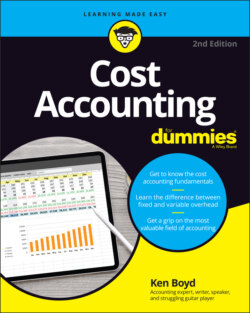Читать книгу Cost Accounting For Dummies - Kenneth W. Boyd - Страница 112
Explaining the debit and credit process
ОглавлениеYou increase and decrease account balances using debits and credits. Business owners need to know these terms because they can’t understand your accounting process without them.
©John Wiley & Sons, Inc.
FIGURE 4-1: The flow of manufacturing costs.
Don’t be frustrated if you need to read this section a few times. I’ve taught the concept for years, and it requires some review before you fully understand it. Here are rules that never change:
Debits: Always posted on the left side of an account
Credits: Always posted on the right side of an account
All accounts are formatted like this:
| Material Control | |
| Debit | Credit |
In accounting, debit and credit don’t mean the same things they do in common talk. Debit can refer to an increase or a decrease. It depends on what type of account you’re working with. The same is true of a credit. Here are the rules for the purposes of this book:
Asset accounts:
Debits: Always increase the account balance. A big debit in the Cash account (an asset) is a good thing
Credits: Always decrease the account balance
Control accounts, work-in-process, and finished goods are all inventory accounts, making them asset accounts. Cost of goods sold is an expense account. Debiting increases all these accounts. The balance for any of these accounts is equal to debit balance less credit balance.
Liability accounts:
Debits: Always decrease the account balance
Credits: Always increase the account balance
Income accounts:
Debits: Always decrease the account balance
Credits: Always increase the account balance
Expense accounts:
Debits: Always increase the account balance.
Credits: Always decrease the account balance
There’s an accounting mantra: “What’s the impact of this transaction on the general ledger?” Always ask. There are several answers, depending on what you’re doing, but in time you will know them all. And it’s not as though if something goes up something else goes down. For example, when you sell something, cash (an asset) gets a debit and goes up. On the other side of the transaction, income gets a credit and goes up.
